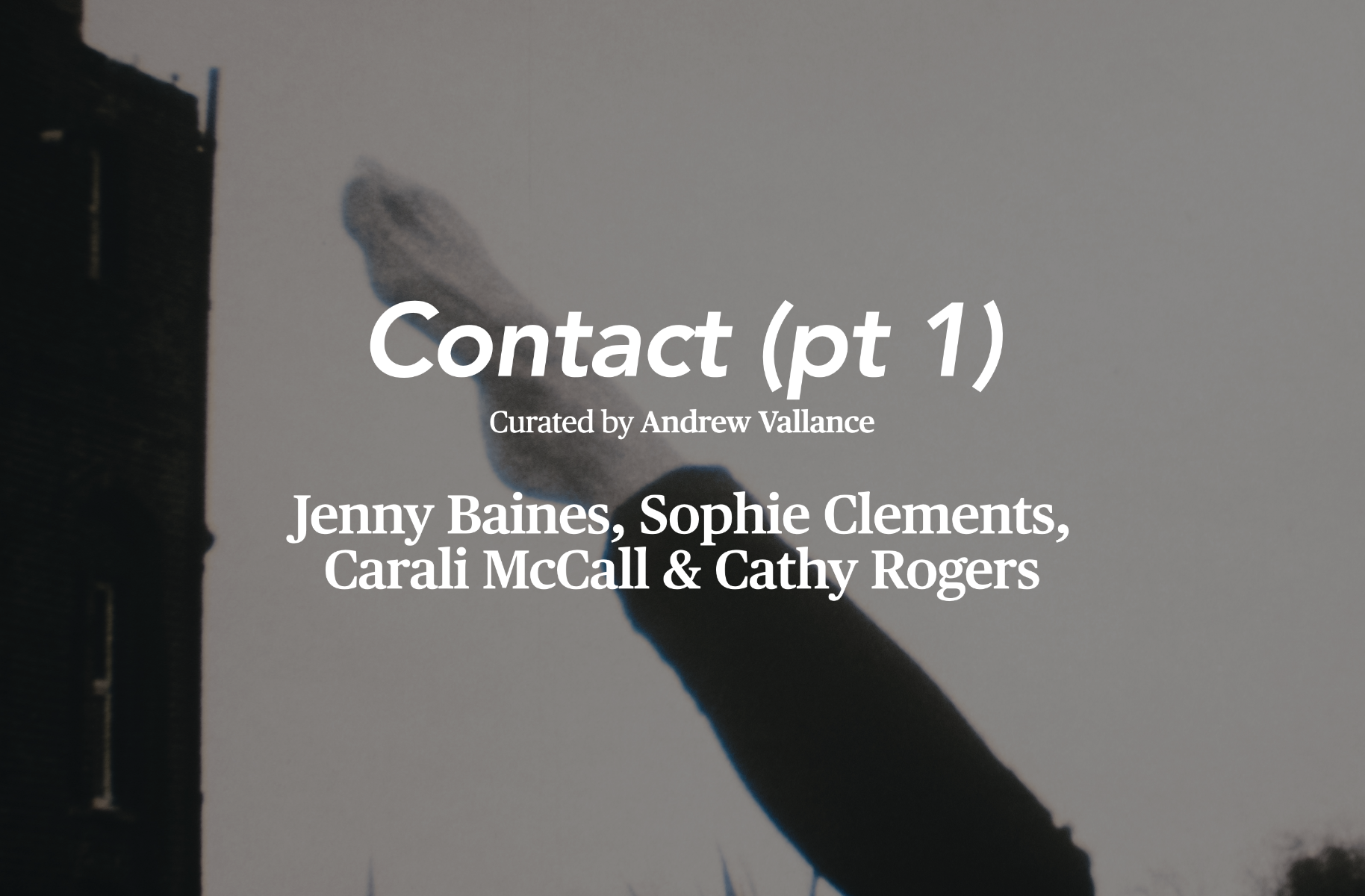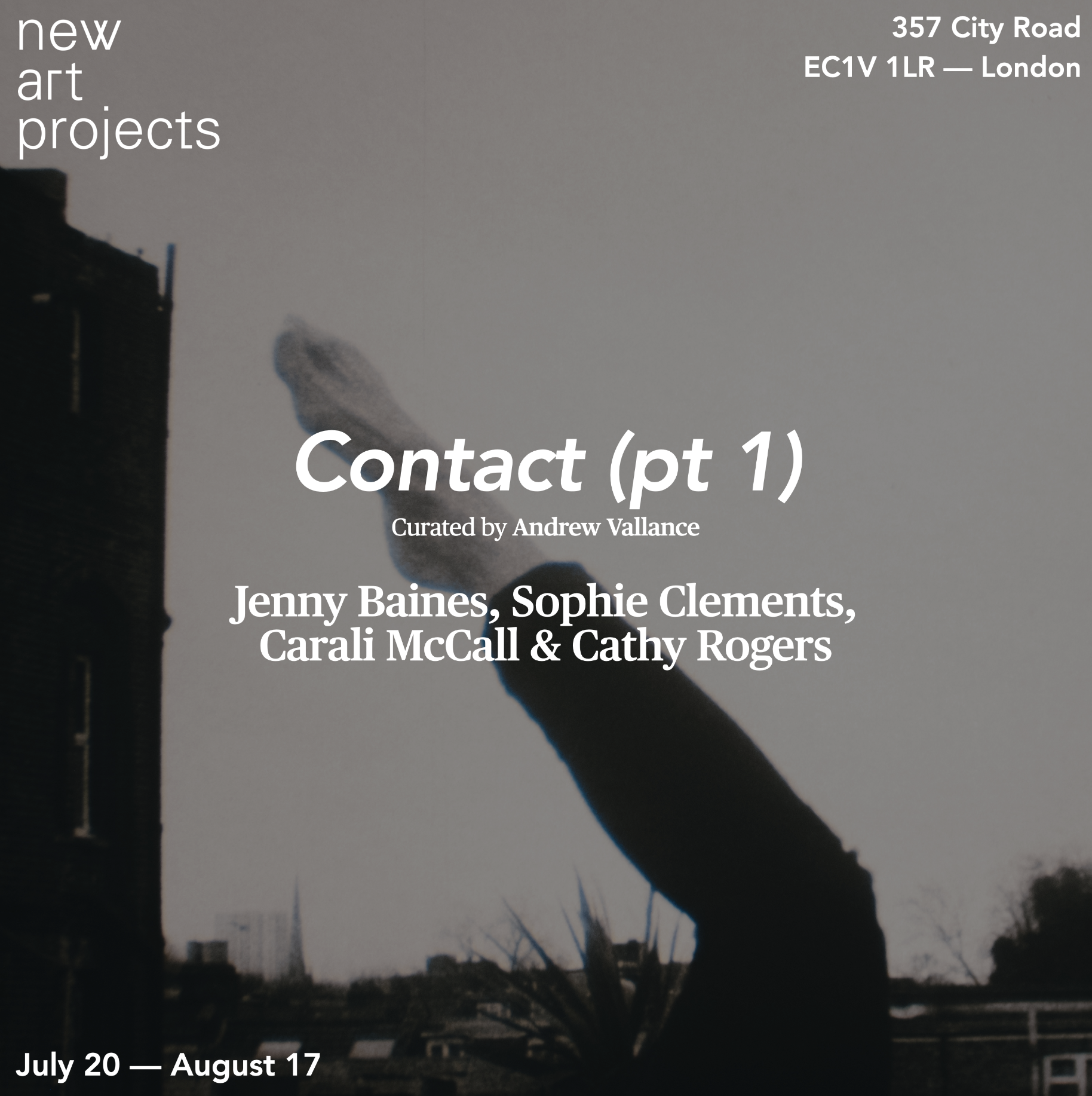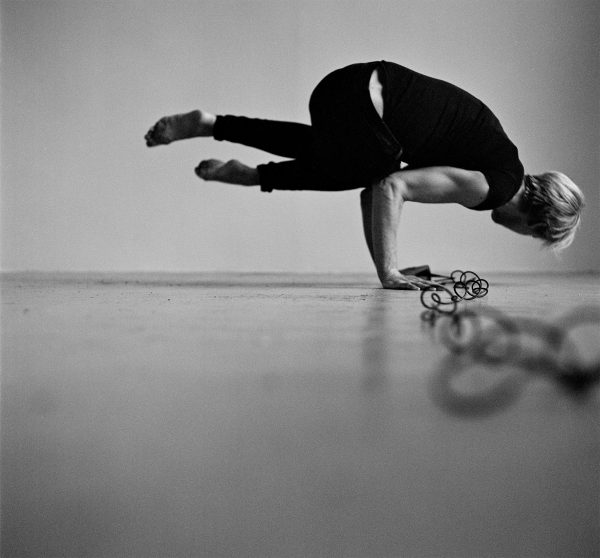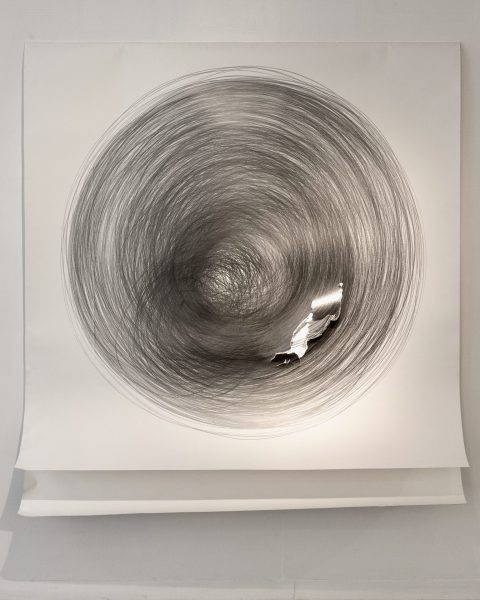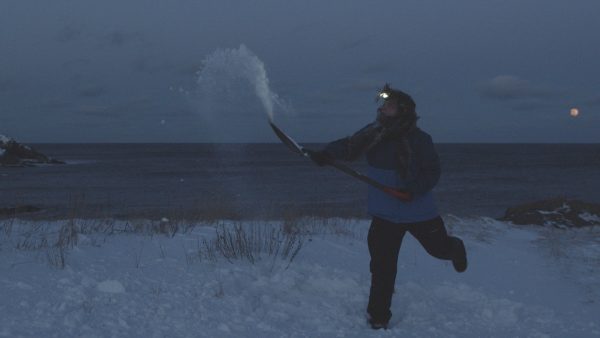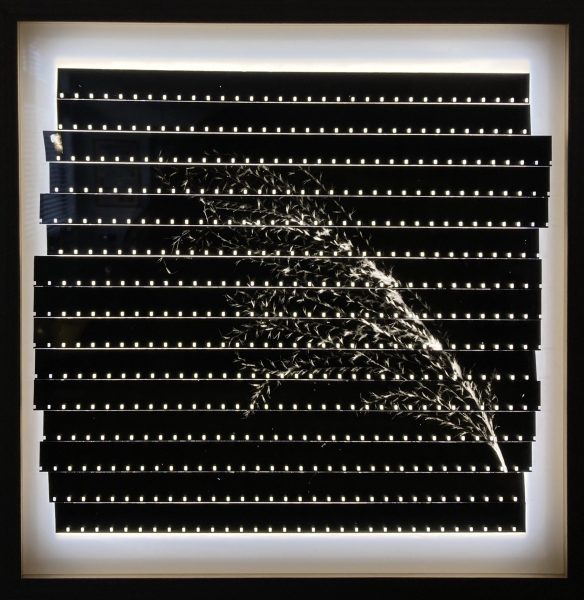Contact is a unique configuration of eight artists, which is structured equally across two exhibitions. These artists work in distinct and interrelated media and forms that explore material, temporal, and spatial relations working with still and moving images, analogue and digital practices, human and machine processes. Their distinct approaches and applications produce different, but related, media engagement, viewing regimes, and cross-disciplinary discourse. They are in contact with materials, forms, contexts, one another, and are part of an ongoing conversation that generates new connections and ideas.
The exhibition will run until August 17th.
Open Thursday to Saturday, from 11am until 6pm, and by appointment.
357 City Road, EC1V 1LR – London.
Jenny Baines
Jenny Baines explores the relationship between the body, screen and space. Her work draws on performative methods, using her body as material, working predominantly with 16mm film and photography. In her work she performs repeated and often absurd actions for the camera, pushing her physical endurance to the limit.
Her performances for camera occur in public locations, her actions being statements of intent and a reclamation of space. The resulting ‘action films’, direct recordings of her recurring movements, and photographs take the form of installations, screenings and performances.
Her installations comprise of looped analogue film that is projected onto sculptural elements, steel ‘frames’ that she has individually crafted. The apparatus of analogue film plays an integral part in the production and display of the works, specifically in relation to the body and scale, the mechanism and the activation of space, suggesting the action continues into the physical space of the exhibition.
Jenny Baines studied at The Slade School of Fine Art and completed her practice-led PhD at Manchester School of Art. Her works have been shown in exhibitions and screenings internationally, including New Arrangements, PINK (Manchester), Film Talks: A Touring Programme of Experimental Film (North America), Prisme #6 (Nantes), Celluloid Now (Chicago), Mono No Aware (New York), Kunstraum Bethanien (Berlin), Galerie Raster (Warsaw), Urban Screens (Bergen), 10th International Istanbul Biennial. Her work has been written about by Kim Knowles, Experimental Film and Photochemical Practices, and Simon Payne, Structures and Systems (pending), and contributed to the book and screening series Film Talks:15 Conversations on Experimental Cinema.
→ Website
Carali McCall
Carali McCall is focused on performance and drawing, though her practice also spans sculpture, video, photography, sound and writing. In exploring experiences of time and the role of the body, she examines physicality and the thresholds of materials.
She began this performance-based practice in 2004 while an art graduate at the University of Toronto, whilst studying Art and Art History. Focusing on the durational element and physical processes of drawing, using traditional materials of graphite and paper. Her works are made by either moving through the landscape whilst running, drawing a continuous line, or holding an element of the landscape, for instance a rock, as an act of endurance.
‘Circle Drawing’ is a series of large-scale drawings made in front of a live audience, drawing one continuous line at full arm’s length until complete exhaustion, most performances lasting two to four hours. In this work she engages with an on-going process of representing and uncovering ways to understand the body, through movement and stillness, concerned with how we relate to temporal endeavour and the physical environment.
Carali McCall was born Canada and lives and works in London UK. She was awarded MFA at Slade School of Art, PhD at Central Saint Martins. Recent Circle Drawing and Performing Rock performances have been included at Drawing Now Fair (Paris), Blunk Space (California), Guggenheim (Bilbao), CLOSE Ltd Gallery (Somerset). Recent solo exhibitions Intervals of Jupiter I Weight of Things, Gryder Gallery (New Orleans), and group exhibitions include Lines of Empathy, Patrick Heide Contemporary Art (London), I miss the Land but does the Land miss me?, Art Seen (Cyprus). She co-authored Performance Drawing: New Practices since 1945 and the artist book An Arm’s Reach.
→ Website
Sophie Clements
Sophie Clements predominantly works in video and installation. Her work is founded in adventures of lengthy and laborious processes, in which she courts chance and failure, looking to extract and distill the inherent beauty of materials, when observed in an unusual state of being. Working largely with elemental elements, activated by and in dialogue with natural forces – light, gravity, wind, rain – the work speaks to a fascination with a sense of the sublime and the transcendent, a fascination formed from a childhood spent in the wild landscape of the west coast of Scotland.
The work presented in the show marks a shift in her practice – from being behind the camera to in front of it. The three video studies or ‘battles’ are part of a larger body of work entitled, Come to Ground, which began with a two-month residency in Newfoundland Canada in the winter of 2022.
In this place she chose to work in extreme weather conditions, gale force winds and temperatures of minus 20 degrees, with her physical endurance, the battle against natural forces, becoming an externalization of internal struggle. The environmental encounter and endeavour explore ideas of control, power, vulnerability, precariousness and connection.
Sophie Clements studied at the Royal College of Art. Her work has been shown in galleries and concert venues internationally, including The Barbican (London), Seoul Museum of Art (South Korea), The Royal West of England Academy (Bristol), The National Museum of Contemporary Art (Oslo) and The Royal Opera House (London). She is the co-director of MAP (music, arts and performance), a long-standing educational platform for interdisciplinary collaboration, a tutor at The Royal College of Art and visiting tutor at the Guildhall School of Music. She won the Jerwood Moving Image award in 2008.
→ Website
Cathy Rogers
Cathy Rogers creates moving and static works using 8 and 16mm film. Her initial super 8 films were in-camera edited and explore the distance between subject and camera through investigating architectural structures, making their static forms into moving spatial representations. This interest developed into 8mm pinhole and 16mm camera-less films that represent spaces and what happens (or doesn’t happen) in them, capturing stasis and movement in trains, voids, and natural fauna.
Her recent works, standard 8 and 16mm film plant photograms presented as lightboxes, examine organic matter against the linear structure of the filmstrip. ‘Released’ from the projector, the filmstrip is seen as a whole image, unlike the fragmented image in motion when these same photogram films are projected.
These works continue her exploration of the relationship between the things around us in the physical world, as a way of understanding form, volume, emptiness and movement through film. This work repositions the function of a filmstrip; rather than a material that is projected as individual frames, film is seen as strips, which hold a singular image, a process that deconstructs and remakes ‘familiar’ forms and objects.
Cathy Rogers completed an MPhil research degree at the Royal College of Art, titled ‘Film Outside Cinema’. Her works are shown as installations, photographic objects and in programmed screenings, including Equinox, Laurent Delaye Gallery (Ramsgate), Beyond Beck Road (Open House Festival, London), Light Touch, Pie Factory (Margate) and Assembly: A Survey of Recent Artists’ Film and Video in Britain 2008-2013 (Tate Britain). Her work has been written about by Nicky Hamlyn and A.L Rees and contributed to the book and screening series Film Talks:15 Conversations on Experimental Cinema. She curators Analogue Ensemble, an ongoing experimental film and art platform.
→ Website
